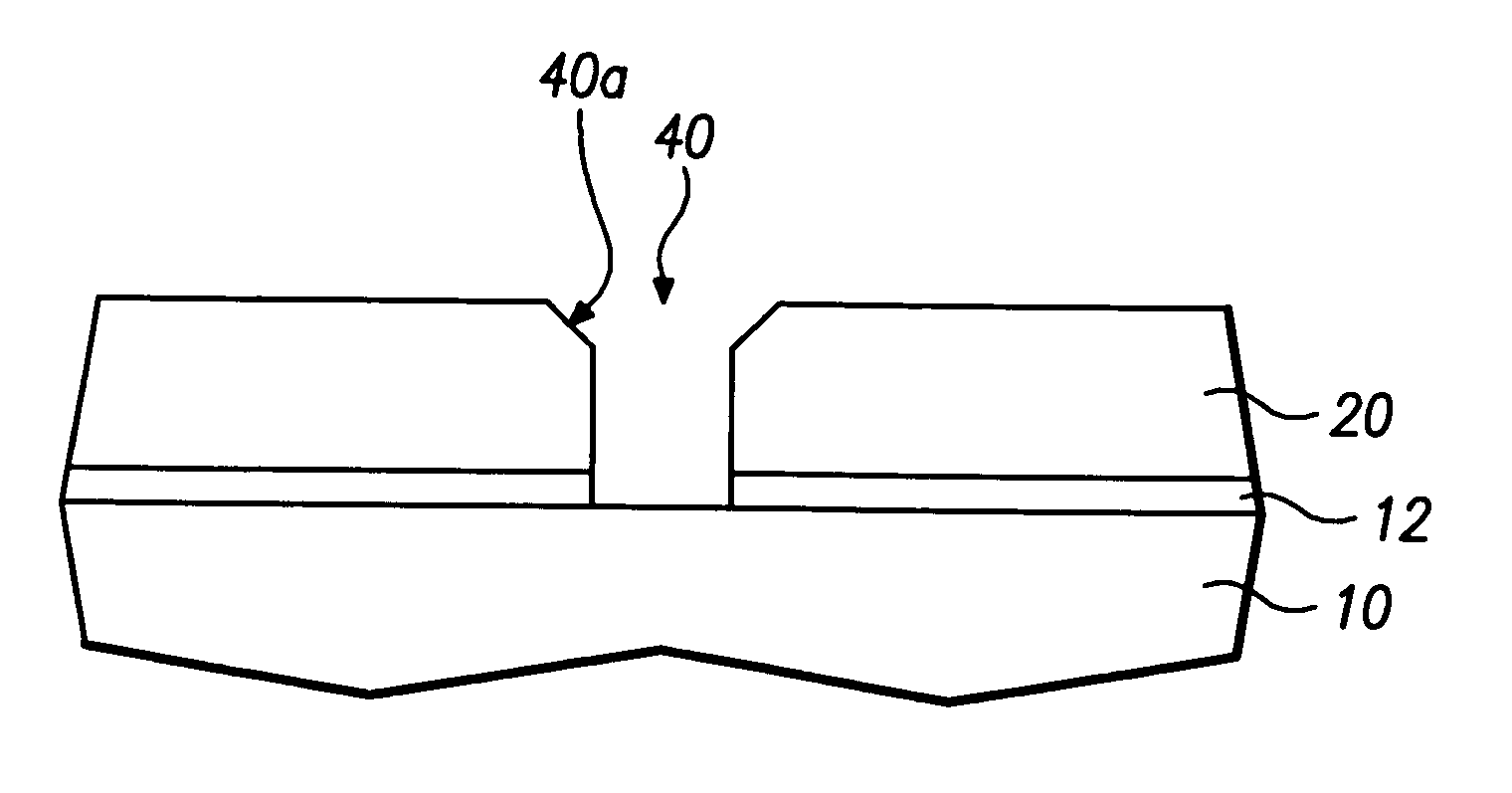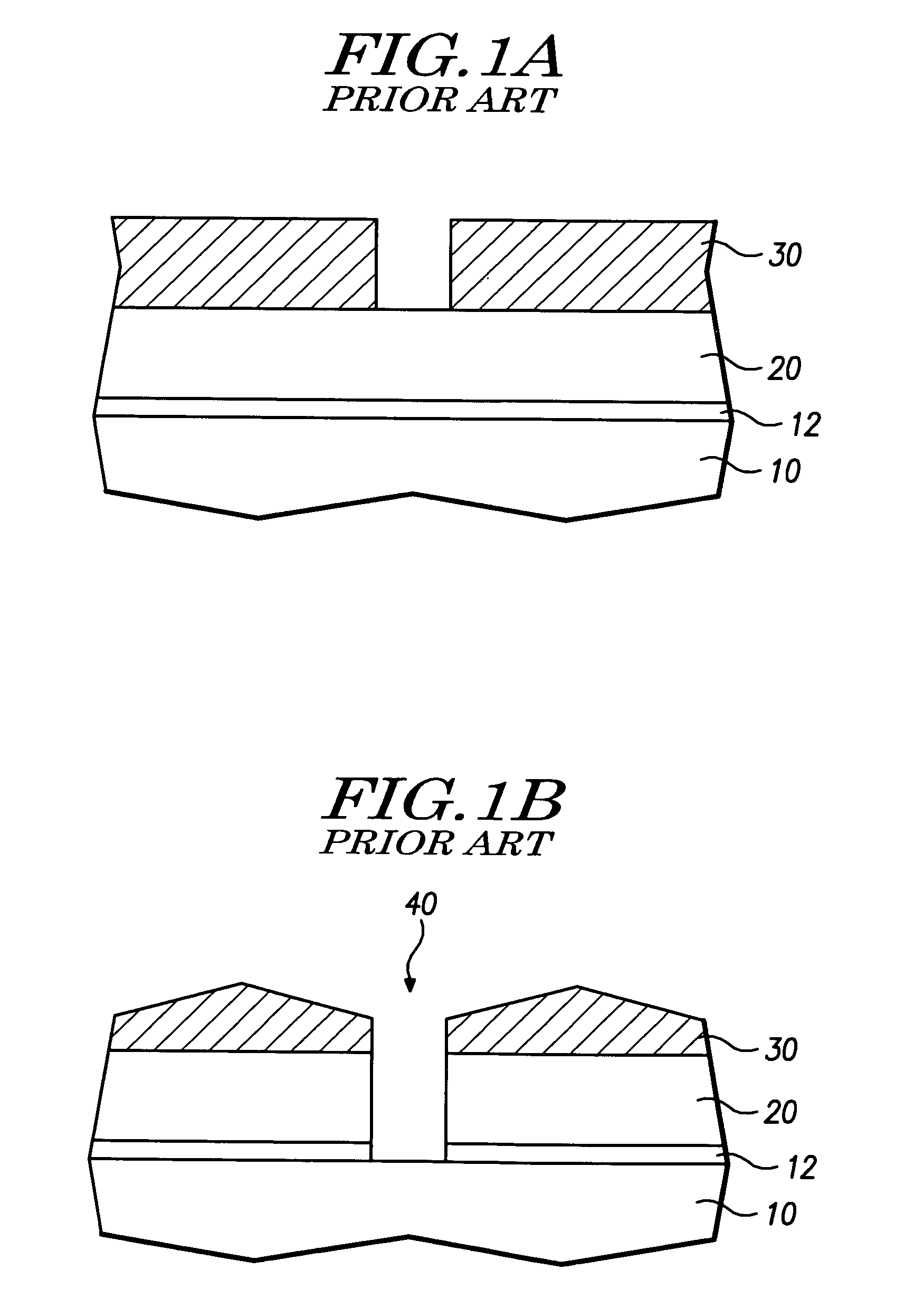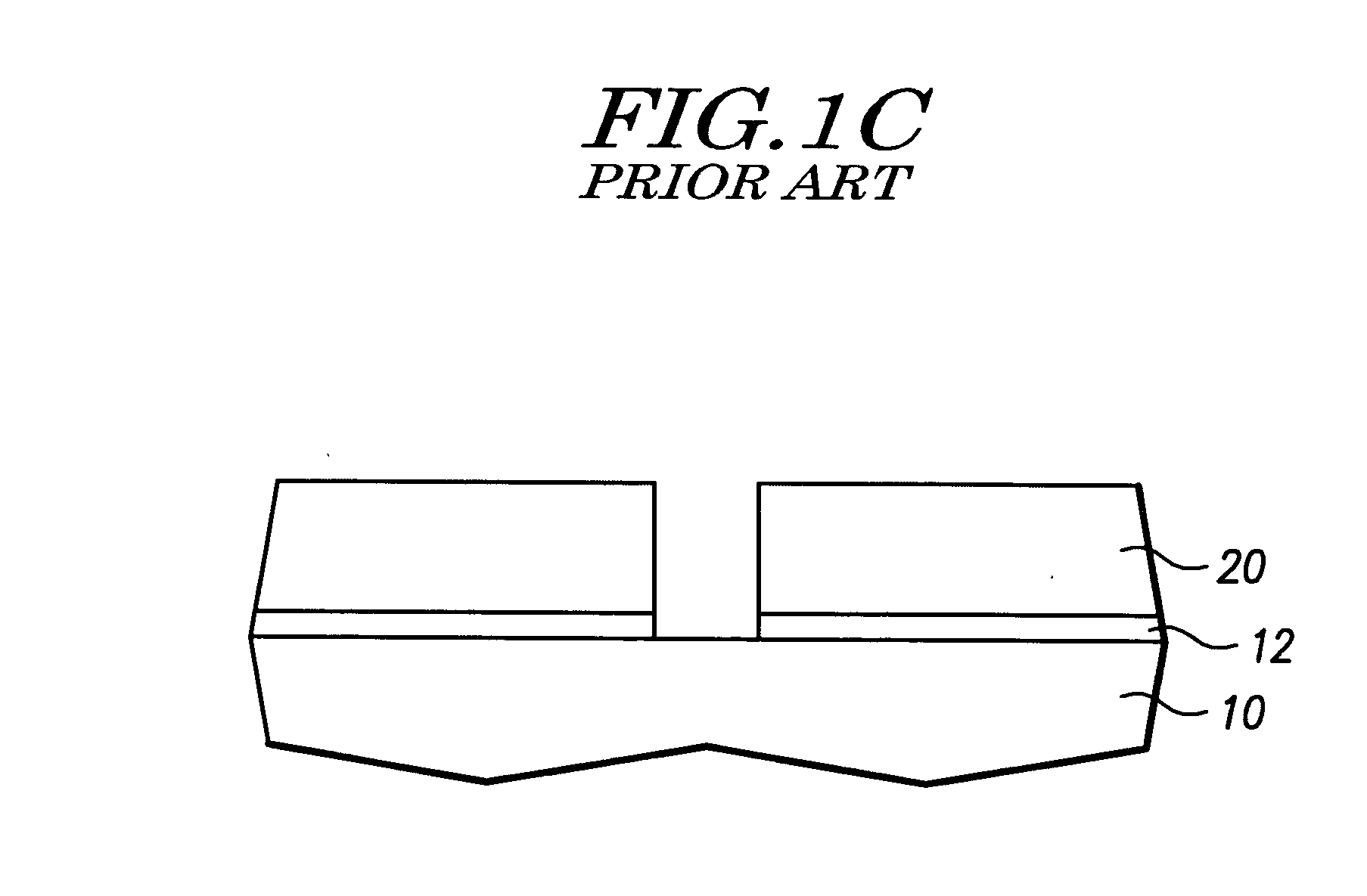Method for forming via-hole in semiconductor device
a semiconductor device and via-hole technology, applied in semiconductor devices, semiconductor/solid-state device details, electrical apparatus, etc., can solve the problems of inability to manufacture large-scale commercial production of complex functional circuit devices, poor step coverage of vertical type of via-hole during metal deposition process, and inability to meet the gap-filling properties of via-hole and/or metal deposition method,
- Summary
- Abstract
- Description
- Claims
- Application Information
AI Technical Summary
Benefits of technology
Problems solved by technology
Method used
Image
Examples
Embodiment Construction
[0018] Referring to FIG. 2A, lower metallization layer 10 is formed on a semiconductor substrate (not shown), and a diffusion barrier layer 12 such as Ti and / or TiN (preferably a Ti layer with a TiN layer thereon) is formed thereon. Next, an insulating layer 20 such as an IMD is formed over an entire surface of the substrate, for the purpose of insulating metallization. The insulating layer 20 may comprise one or more layers of a silicon oxide, such as silicon dioxide (which may be optionally doped with fluorine, boron, phosphorous, or a mixture of boron and phosphorous), silicon nitride, silicon oxynitride, silicon-rich oxide, etc. In one embodiment, insulating layer 20 comprises a lower silicon nitride or silicon-rich oxide layer, with one or more layers of a (doped) silicon dioxide thereon. In one example, the (doped) silicon dioxide comprises a bulk layer of fluorosilicate glass (FSG) with layers of undoped silicate glass (USG) above and below the FSG layer. Then, a mask (e.g., ...
PUM
| Property | Measurement | Unit |
|---|---|---|
| pressure | aaaaa | aaaaa |
| pressure | aaaaa | aaaaa |
| power | aaaaa | aaaaa |
Abstract
Description
Claims
Application Information
 Login to View More
Login to View More - R&D
- Intellectual Property
- Life Sciences
- Materials
- Tech Scout
- Unparalleled Data Quality
- Higher Quality Content
- 60% Fewer Hallucinations
Browse by: Latest US Patents, China's latest patents, Technical Efficacy Thesaurus, Application Domain, Technology Topic, Popular Technical Reports.
© 2025 PatSnap. All rights reserved.Legal|Privacy policy|Modern Slavery Act Transparency Statement|Sitemap|About US| Contact US: help@patsnap.com



